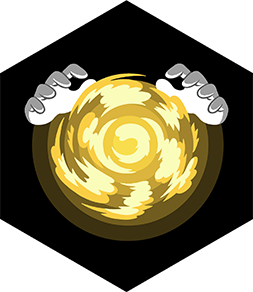Create an Optical Illusion
Make a simple spinning optical illusion using cardboard, paper patterns, a straw, and a pencil; assemble and spin to explore vision and motion perception.



Step-by-step guide to create a simple spinning optical illusion
Step 1
Gather all the materials and put them on a clean table.
Step 2
Place a round object like a cup on the cardboard and trace a circle about the size of your palm.
Step 3
Cut out the cardboard circle carefully with scissors.
Step 4
Trace a matching circle onto your paper pattern.
Step 5
Cut out the paper pattern circle carefully with scissors.
Step 6
Push the pencil tip through the exact center of both circles to make a small hole in each.
Step 7
Use colouring materials to draw a strong high-contrast pattern on the paper circle such as a spiral or bold radial lines.
Step 8
Tape the paper pattern onto the cardboard circle aligning the center holes.
Step 9
Cut a short piece of straw about 2 centimeters long.
Step 10
Tape the short straw upright to the back center of the cardboard circle so the straw’s hole lines up with the circle’s center.
Step 11
Slide the straw-and-disc onto your pencil so the disc sits on the pencil near the eraser.
Step 12
Hold the pencil steady and flick the straw with a finger to spin the disc and watch the optical illusion appear.
Step 13
Share a photo or video of your spinning optical illusion on DIY.org.
Final steps
You're almost there! Complete all the steps, bring your creation to life, post it, and conquer the challenge!


Help!?
What can we use if we don't have cardboard, a drinking straw, or a pencil?
You can substitute a corrugated cereal box or thick book cover for the cardboard circle, a short wooden skewer or a tightly rolled paper tube for the 2 cm straw, and a thick marker shaft or small wooden dowel in place of the pencil while still tracing, cutting, making center holes, and sliding the straw-and-disc onto the chosen shaft.
My disc wobbles or won't spin smoothly—what should I check?
Check that the paper pattern is taped flat and exactly aligned over the cardboard center hole (step 'Tape the paper pattern onto the cardboard'), that the straw is taped upright and centered on the back, and that the center holes are small enough so the disc sits snugly on the pencil without too much play.
How can I adapt this activity for a 4-year-old or a 12-year-old?
For a 4-year-old, pre-cut the cardboard and paper circles and pre-poke the center hole so they can focus on coloring bold patterns and flicking the disc, while a 12-year-old can measure and mark the exact center, design more intricate high-contrast patterns, and experiment with different straw lengths or a motorized spinner.
How can we personalize or make the illusion more impressive?
Enhance the effect by drawing high-contrast spirals or alternating black-and-white radial bands on the paper before taping (step 'Use colouring materials'), try double-sided patterns or edge stickers for extra motion tricks, and record a slow-motion video to share on DIY.org.
Watch videos on how to create a simple spinning optical illusion
Art activity idea: How to make Op-Art sphere illusions. Perfect for at home or the classroom #withme
Facts about optical illusions and visual perception
✂️ Simple cardboard and paper toys like the thaumatrope and zoetrope delighted Victorian kids and helped inspire modern animation.
🎞️ Most films use about 24 frames per second — your brain blends those frames into smooth movement.
👁️ Persistence of vision means our eyes briefly retain an image, so quickly changing pictures can appear continuous when spun.
🌀 The phenakistoscope (1832) used a spinning disk with slits to turn still drawings into the illusion of motion.
🧠 The phi phenomenon is a brain trick where separate flashes are seen as a single moving light — a key idea behind animation.
How do I make a simple spinning optical illusion with cardboard, paper patterns, a straw, and a pencil?
What materials do I need to create the spinning optical illusion?
What ages are suitable for making and playing with this spinning optical illusion?
What are the benefits of making a spinning optical illusion with kids?


One subscription, many ways to play and learn.
Only $6.99 after trial. No credit card required



